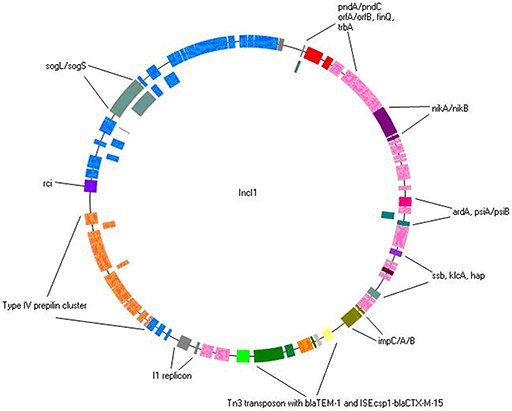4.2 The rapid spread of CTX-M genes
Plasmids carrying CTX-M genes have been reported in several
Plasmids that are found in many genetically diverse bacterial strains are termed ‘epidemic plasmids’ and can help to explain the rapid global spread of CTX-Ms. This is sometimes referred to as the ‘CTX-M pandemic’ (Cantón and Coque, 2006). However, the reasons for this CTX-M pandemic are complex. The horizontal gene transfer of plasmids containing CTX-M genes occurs in the human gut and in the environment and is fundamental to their global spread.

Plasmids carrying CTX-M genes often carry bacteriophage-related sequences (Falgenhauer et al., 2014) or genes that are required for the formation of pili (Carattoli, 2013).
What horizontal gene transfer mechanisms do the presence of bacteriophage-related sequences and pili formation genes suggest?
The presence of bacteriophage-related sequences in some CTX-M-containing plasmids suggests horizontal gene transfer by transduction (see Section 2.4). Alternatively, gene transfer via conjugation requires a pilus linking the donor and recipient bacteria, therefore the presence of genes required for the formation of pili suggests horizontal gene transfer via this mechanism (see Section 2.1).
Perhaps the most concerning feature of these CTX-M-containing plasmids is their ability to acquire additional antibiotic resistance genes (Potron et al., 2013). If ‘epidemic plasmids’ acquire resistance to antibiotics such as carbapenems, which are frequently used to treat cephalosporin-resistant infections, the rapid spread of multidrug resistance could seriously challenge the treatment of infections.
